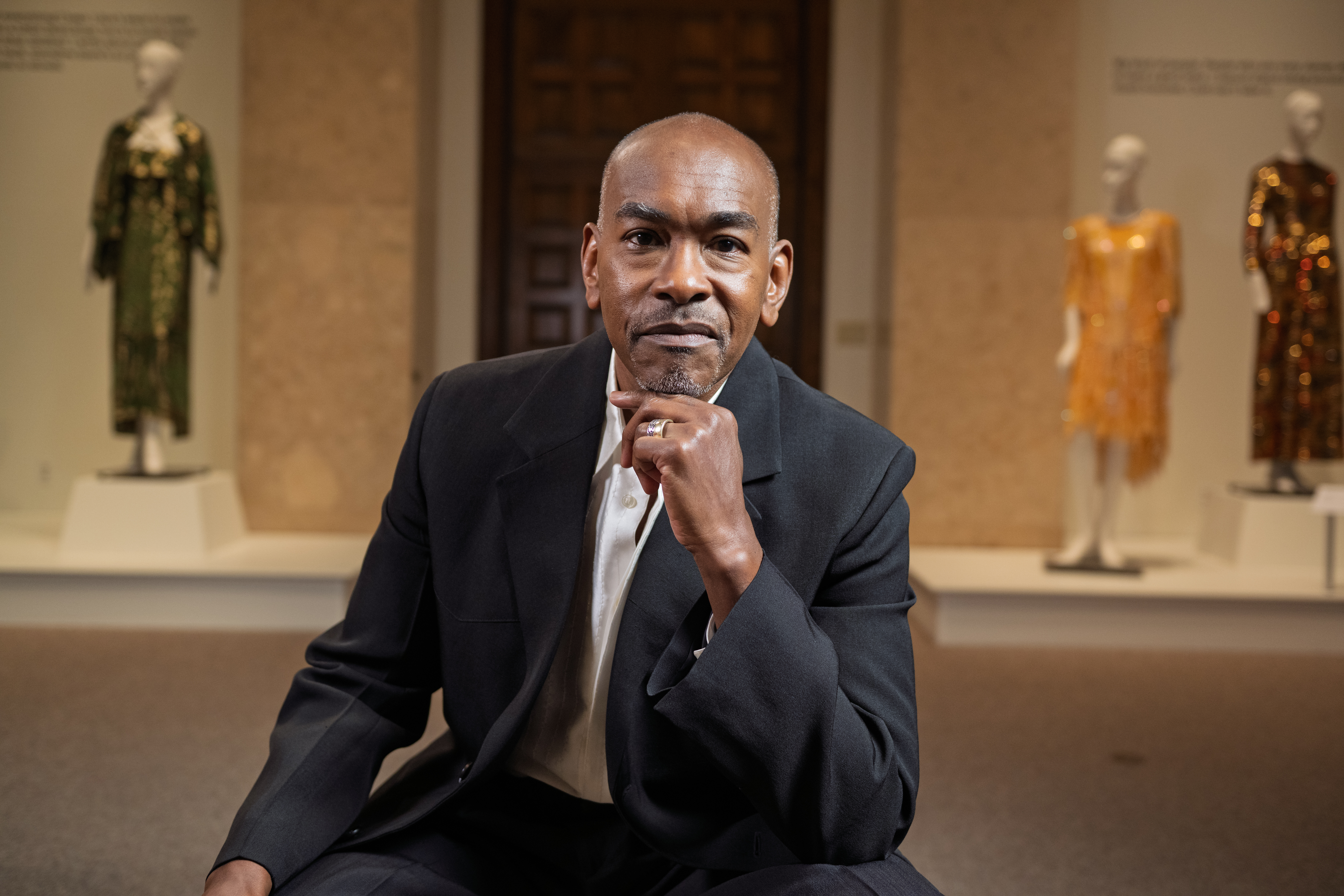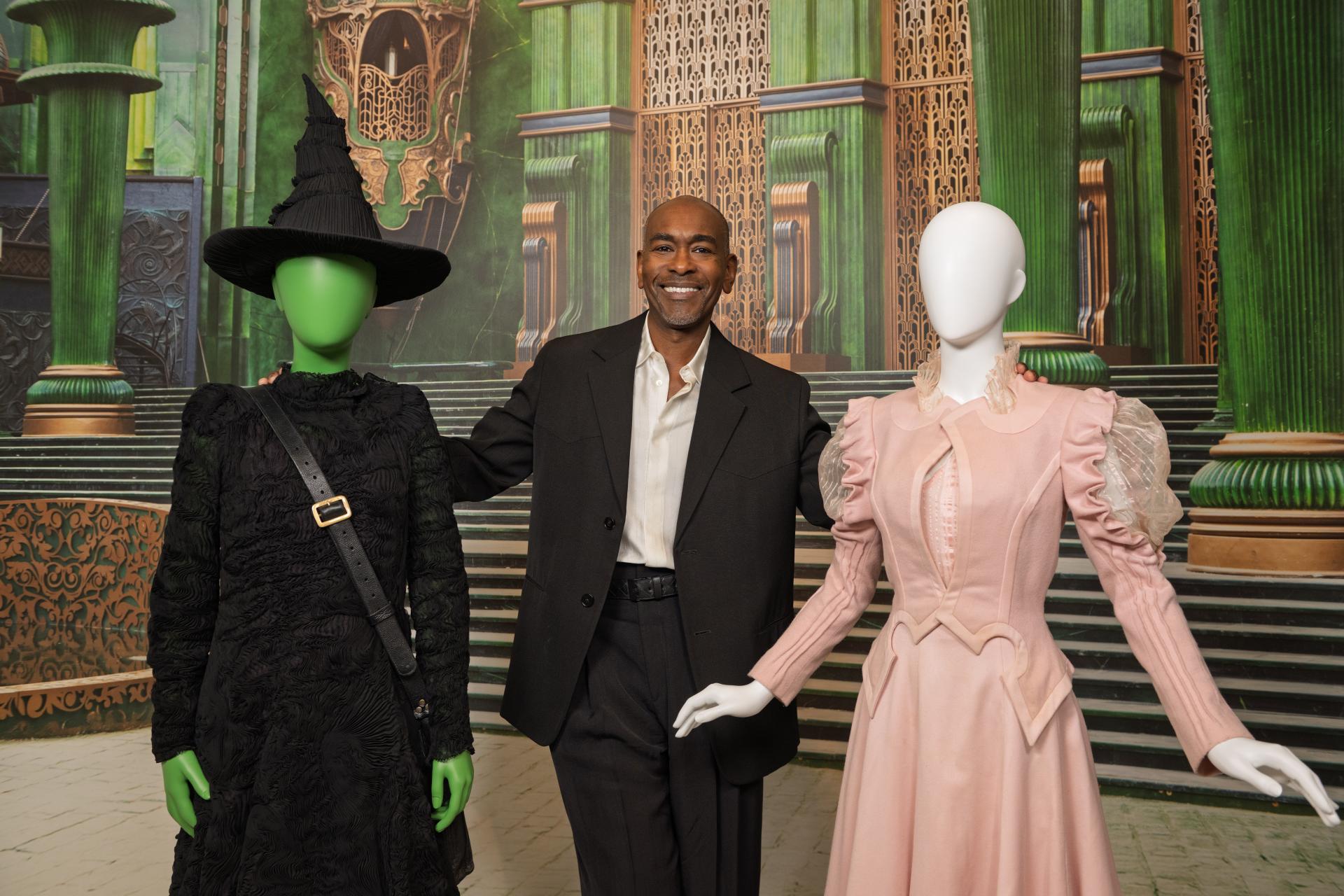In a room surrounded by shimmering gowns and glittering jewels, Paul Tazewell, the Oscar-, Tony- and Emmy-winning costume designer for ŌĆ£WickedŌĆØ and ŌĆ£Wicked: For Good,ŌĆØ speaks about creativity, collaboration and the responsibility of artists to sustain the cultural heartbeat of society. Sitting within the ┬ķČ╣Š½čĪ MuseumŌĆÖs ŌĆ£SparkleŌĆØ exhibition, Tazewell reflects on a career that has taken him from Akron to Broadway to Hollywood ŌĆō and back again.
His visit to campus in September was part of the 2025ŌĆō2026 Thomas Schroth Visiting Artist Series, organized by the ┬ķČ╣Š½čĪ Museum. His return visit underscores the seriesŌĆÖ mission to bring celebrated creative voices to campus and to ignite inspiration across Northeast Ohio. Over two days, Tazewell attended classes with fashion and theatre students, met with faculty, and joined ┬ķČ╣Š½čĪalumna Aleah Wright, a fashion journalist and founder of Wright Beauty, and Museum Director Sarah Spinner Liska, Ph.D., J.D., for a public conversation before a packed audience.
ŌĆ£We are thrilled to welcome Paul Tazewell back to ┬ķČ╣Š½čĪ,ŌĆØ Spinner Liska said. ŌĆ£Presenting his work at the museum highlights our mission to connect world-class design with our students, campus and community. Paul TazewellŌĆÖs extraordinary journey from Akron to the world stage is deeply inspiring for our students, making this visit a true homecoming and a celebration of the ┬ķČ╣Š½čĪMuseum as a world-renowned center for fashion and costume history.ŌĆØ
Downstairs, visitors can view two of his original costumes from ŌĆ£WickedŌĆØ ŌĆō one for Elphaba and one for Glinda ŌĆō on display through Nov. 9.
ŌĆ£ItŌĆÖs important for me to give back,ŌĆØ Tazewell said. ŌĆ£I think that it is necessary, most definitely now, that there are ways of encouraging and supporting artistic [and] cultural development. It keeps art alive within our lives, and I think that that is a huge priority for humanity.ŌĆØ
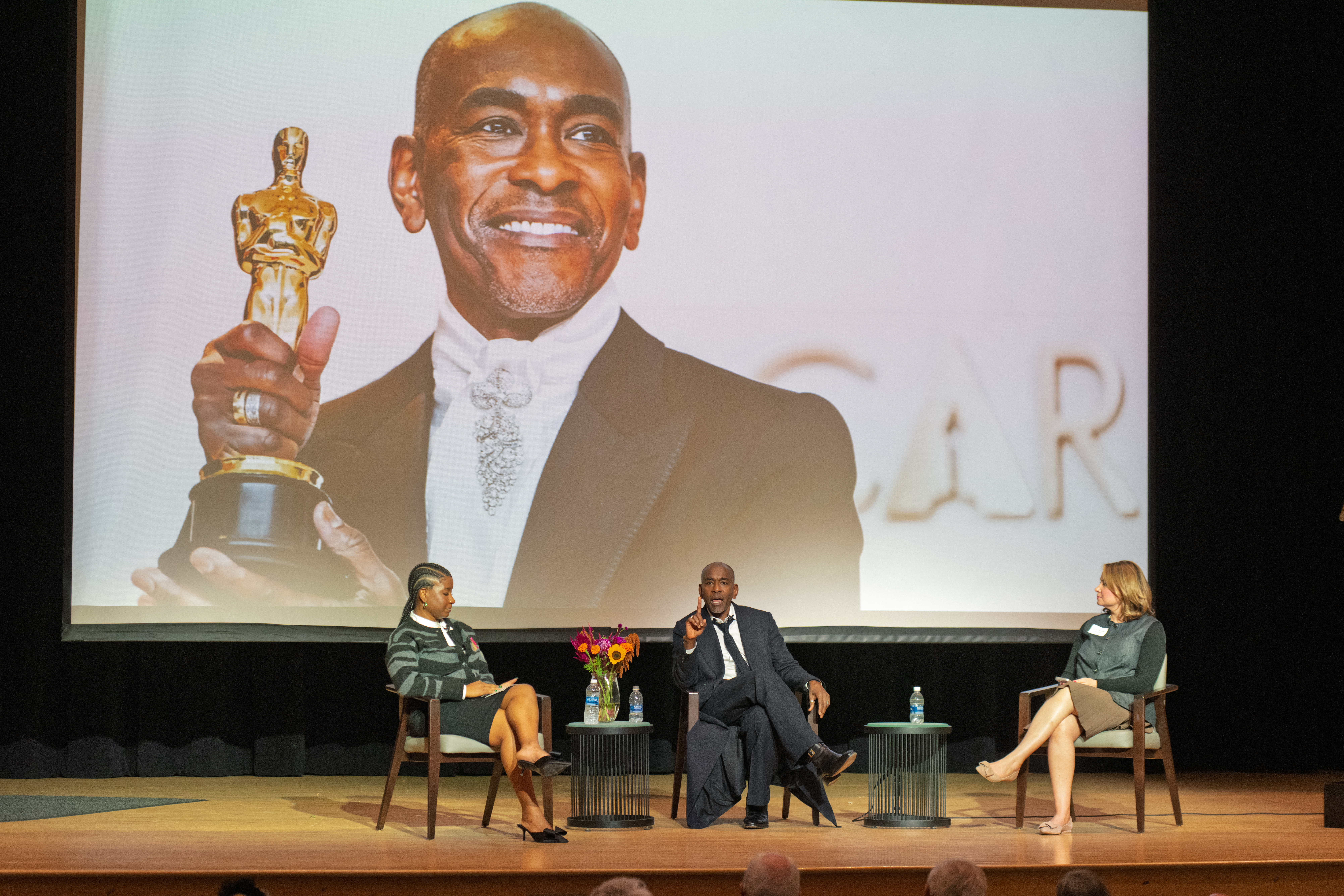
The Power of Place
For Tazewell, Kent StateŌĆÖs location and legacy make it a distinctive environment for creative development.
ŌĆ£┬ķČ╣Š½čĪand its fashion program are renowned,ŌĆØ he said. ŌĆ£ItŌĆÖs not just design ŌĆō itŌĆÖs also the business of making fashion. And being in the middle of Ohio, outside [of] the chaos of big cities, provides a haven that allows for more focus. Students are surrounded by this fashion museum that has an amazing collection of clothing. And being able to use that as research and inspiration is invaluable. And then to have the faculty that ┬ķČ╣Š½čĪdoes to set them up for success.ŌĆØ
He drew parallels to his own education at the North Carolina School of the Arts, where distance from major cultural hubs created space for curiosity and connection.
ŌĆ£I was outside of the gaze of a large city, creating a community of highly artistic and talented people, both actors, directors and artists. The energy was very vital, and we fed off each other as we were pursuing and investigating our specific focus. That is where strong creativity is born,ŌĆØ he said.
Mentorship, he added, is central to his mission.
ŌĆ£I love working with students at this stage of creativity,ŌĆØ he said. ŌĆ£To nurture their artistic brain in how their imagination works, how to focus their imagination, and also to provide some specificity on how they want to be creative and where they want to go with their talent.ŌĆØ
In his own work, Tazewell collaborates with specialists across disciplines: milliners, jewelers, conceptual artists, digital illustrators and craftspeople who transform sketches into tangible worlds.
ŌĆ£It opens a world for students to present what those options are at a stage when they are really searching for what is the best fit for them within this world of entertainment or fashion,ŌĆØ he said. ŌĆ£I think that itŌĆÖs important to be there as a guide.ŌĆØ
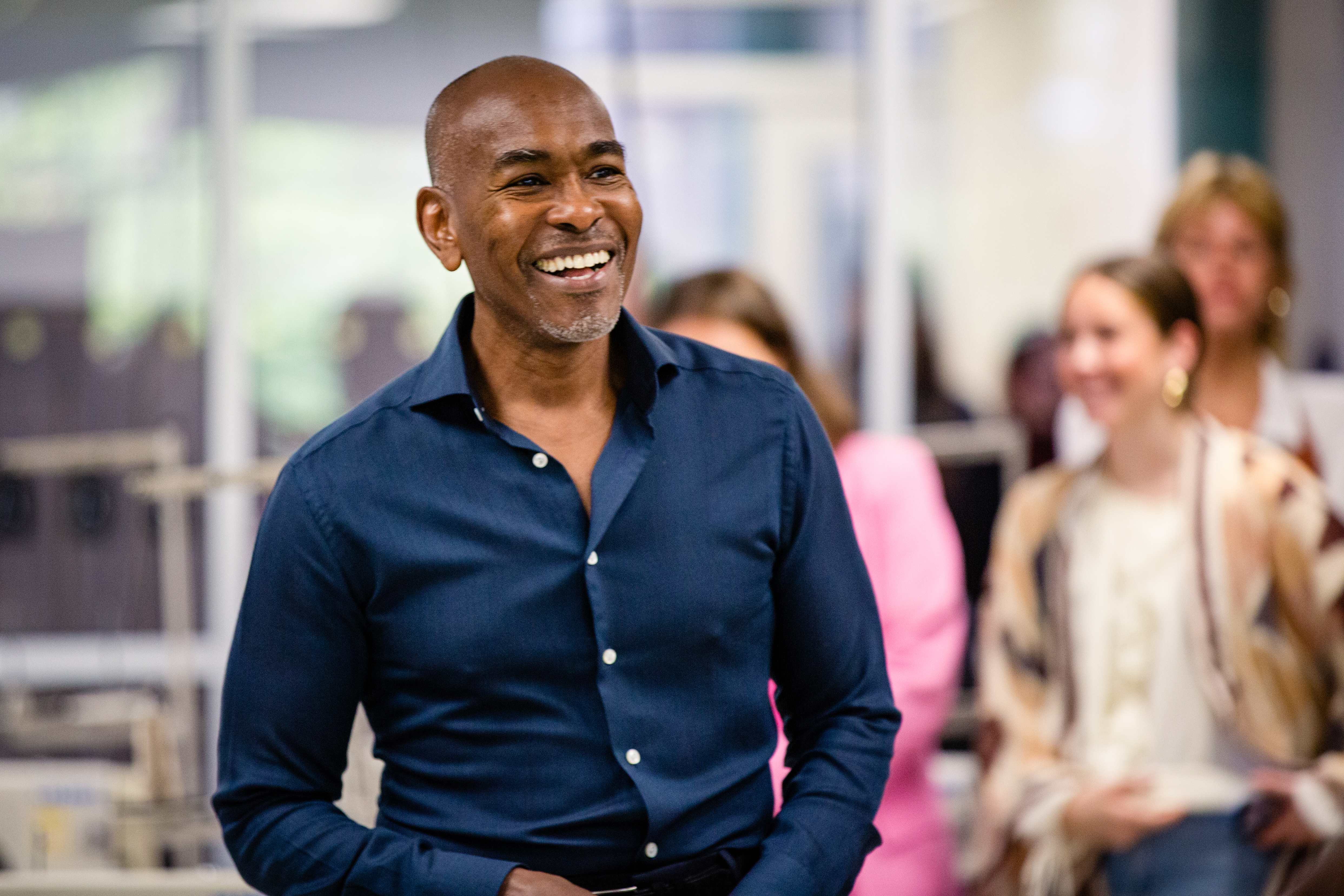
From Akron to Broadway
An Akron native and graduate of Buchtel High School, Tazewell credits Northeast OhioŌĆÖs cultural richness ŌĆō and his familyŌĆÖs encouragement ŌĆō for sparking his imagination. His mother taught him to sew, his grandmother painted and his father pursued creative hobbies of his own.
ŌĆ£I remember seeing plays or musicals at the Hanna Theatre, the Ohio Theatre, the Cleveland Playhouse,ŌĆØ he recalled.
He felt that those experiences showed him that there was a world outside of Akron or Cleveland. He describes his upbringing as ŌĆ£a safe space for development.ŌĆØ Because his parents exposed him to live performance, he could imagine a larger world
ŌĆ£Just be introduced to the fact that it was out there made it less daunting to then leave and find my way in a big city like New York,ŌĆØ he said.
That leap eventually led to Broadway. His first major production, ŌĆ£Bring in ŌĆÖDa Noise, Bring in ŌĆÖDa Funk,ŌĆØ launched a career defined by both artistry and discipline. Subsequent projects included ŌĆ£The Color Purple,ŌĆØ ŌĆ£In the HeightsŌĆØ and ŌĆ£HamiltonŌĆØ ŌĆō the latter earning him a Tony Award. His designs for Steven SpielbergŌĆÖs ŌĆ£West Side StoryŌĆØ and the dual ŌĆ£WickedŌĆØ films brought further acclaim, including an Academy Award.
ŌĆ£I cherish each of those collaborations, each of those opportunities for different reasons. What is consistent is the presence of respect and trust and creativity and intelligence. Each of those pieces is very smart. Each of the people leading the group of creators is also very smart. But the written piece, the script and the music are each intelligent and they have depth. And it allowed me to sink my teeth into creating a world that meant something that I knew would resonate beyond just seeing entertainment. And that will always be important for me,ŌĆØ Tazewell said.
Returning home to Akron, he said, felt grounding.
ŌĆ£ItŌĆÖs very meaningful to be back here at Kent State, also close to home. It is like a life check. Just to be standing on the soil, it resonates in a certain way,ŌĆØ Tazewell said. He also mentioned that during his last visit to Kent State, he hadnŌĆÖt gotten to see the museum.
ŌĆ£To be able to experience this amazing museum of costume and an institution that prioritizes the same craft that I do is really beautiful. And that does it at such an excellent level,ŌĆØ he said. ŌĆ£ItŌĆÖs a gift to be here and to be a part of the ┬ķČ╣Š½čĪstory.ŌĆØ
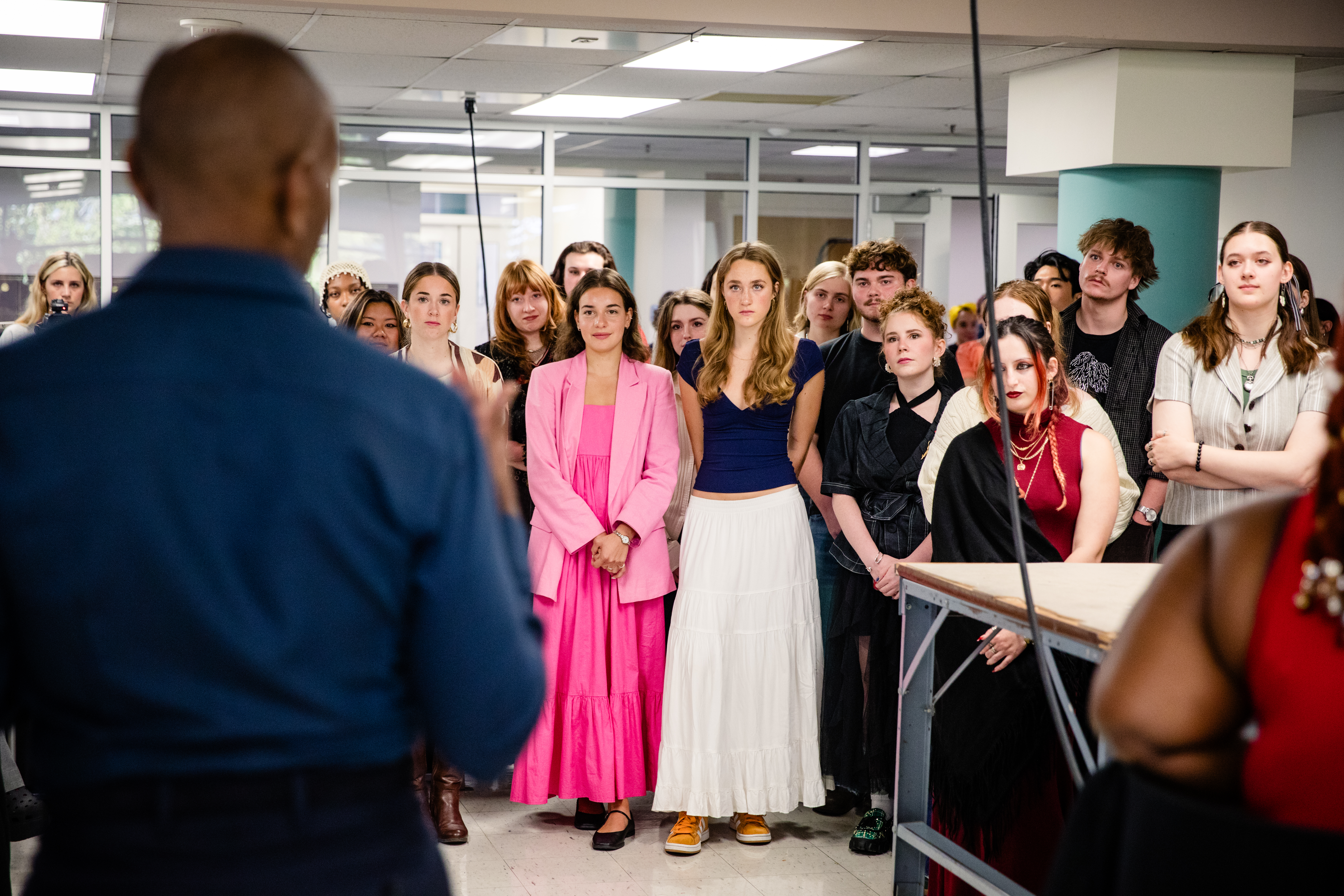
Designing ŌĆśWickedŌĆÖ
The ┬ķČ╣Š½čĪMuseumŌĆÖs ŌĆ£WickedŌĆØ costume display coincided with TazewellŌĆÖs visit, offering visitors an intimate look at the artistry behind one of the most anticipated film adaptations in recent memory.
ŌĆ£I realized just how extraordinary the opportunity was to be able to design [for] an epic film or a pair of epic films like ŌĆśWickedŌĆÖ Part One and ŌĆśWicked for Good,ŌĆÖŌĆØ he said.
He views the story of ŌĆ£WickedŌĆØ and ŌĆ£The Wizard of OzŌĆØ as the one fairytale that is fully American. ŌĆ£How ŌĆśThe Wizard of Oz,ŌĆÖ the film that was created in 1939, has affected visual imagery and the rest of our culture is vast. ItŌĆÖs huge,ŌĆØ he said.
Tazewell relished the challenge of contributing to that visual legacy. Working with director Jon M. Chu and stars Cynthia Erivo (Elphaba) and Ariana Grande (Glinda), he explored how costume could reveal each characterŌĆÖs emotional evolution.
He spoke about how Erivo and Grande both brought great depth and designing for them meant capturing how the characters grow from Elphaba finding empowerment despite being vilified for her skin color or Glinda discovering her heart through friendship.
ŌĆ£To incorporate the richness of emotion and personality into the characters allowed for those characters to live on screen in a way that you donŌĆÖt get with the Broadway musical,ŌĆØ he said. "You donŌĆÖt have the scope that youŌĆÖre presenting and figuring out what do these characters wear day in, day out? Over time, how is their clothing going to shift and change, and how will it speak to what their emotional arc is?ŌĆØ
He emphasized that collaboration was key. They worked together to consider the overall story and how it would be laid out for the audience, including the environment around the characters as well as their emotions and how they relate to each other. He viewed that as a necessary part of keeping the audience drawn in and carried through the two stories.
ŌĆ£These are real questions about human development, and it's all a real human story, and thatŌĆÖs what makes the overall culture of ŌĆśThe Wizard of OzŌĆÖ so very interesting,ŌĆØ he said. ŌĆ£ItŌĆÖs just how you crack it open in certain ways so that you see a different facet of what the story might potentially be. And so going on that journey is really exciting for me. ItŌĆÖs kind of what I live for.ŌĆØ
Lessons in Craft and Confidence
Despite his accolades, Tazewell admits it took decades to feel fully assured in his artistry.
It wasnŌĆÖt until Hamilton that he finally acknowledged to himself that he knew what he was doing. Artists are always their own worst critics, he said, which keeps them on point. But he admitted itŌĆÖs likely not the healthiest way to be. But he believes he wouldnŌĆÖt have been able to do Hamilton without the experiences he had in the years running up to the show.
ŌĆ£I would not have been able to design Hamilton in the way that I did because it was defined by everything else that I had engaged with every other show that I had ever done,ŌĆØ he said. ŌĆ£All the work that I had done telling stories about people of color, all the work that I had done working with research and recreating a historic costume, investigating portraiture, all the work that I had done on musicals, all my desire to be as detail oriented as possible and put everything into every garment that I ever designed, all of that was present,ŌĆØ he said.
He attributes his success to his perfectionism and hard work, but also urges students to be collaborative and open to ideas.
ŌĆ£I want people who are passionate about and joyful about working on costumes,ŌĆØ he said of people who work on his teams for projects. ŌĆ£I look for somebody who is excited about creating the world that IŌĆÖve designed and is also inquisitive about how we're going to create it,ŌĆØ he said. ŌĆ£WeŌĆÖll sit and brainstorm ... and just that process makes it that much richer and the costumes overall in the end, benefit from that as well.ŌĆØ
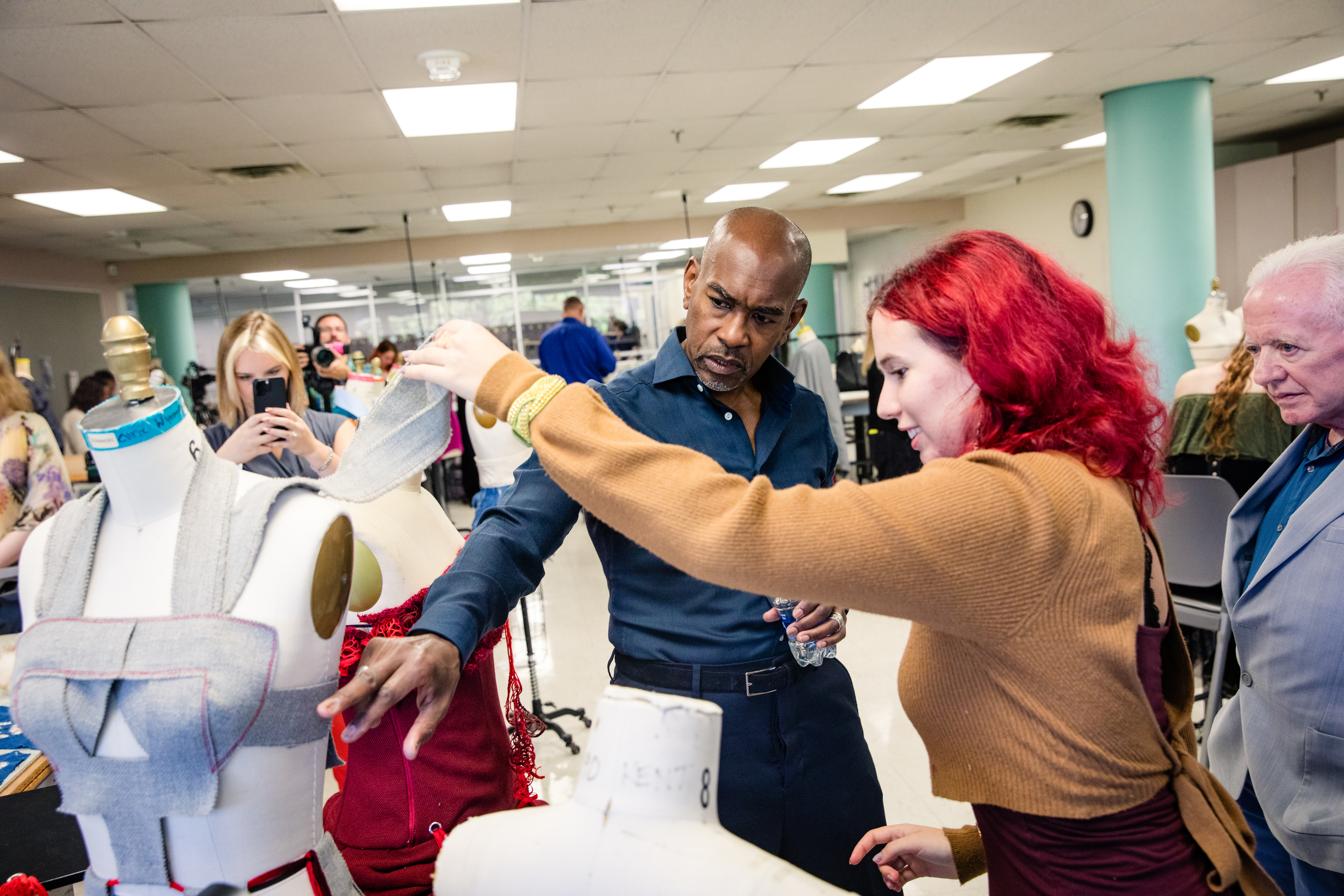
The Art That Defines Us
TazewellŌĆÖs reflections often return to a single theme: art as the defining expression of humanity.
ŌĆ£The importance of the arts in general is I think that it speaks so directly to human existence and how we define ourselves as individuals and also as a culture. The goal is to encourage artistic thought,ŌĆØ he said.
He sees art everywhere ŌĆō from theatre to architecture, from fashion to urban design.
In his recent travels to Paris, New York, or even Kent, he encouraged people to look at the design that surrounds them.
ŌĆ£There was somebody who had to draw each of the buildings that you see as you walk around. There was some group of people that put thought to the proportions, the detail, every single element, the kind of carpet, what color was going to be the color of the walls. That is art,ŌĆØ he said. ŌĆ£That is the artistic eye, and itŌĆÖs not superficial. It is who we are. It is how we define ourselves, and it canŌĆÖt be dismissed.ŌĆØ
This is why he thinks itŌĆÖs so very important to have institutions that encourage and nurture talent and artistic thought.
That conviction, he believes, is what sustains his career and fuels his desire to teach.
ŌĆ£By keeping it an important pursuit, I think that it keeps my work alive, it keeps art alive within our lives, and I think that that is a huge priority for humanity.ŌĆØ
Paul TazewellMy medium of storytelling is clothing and is specific to character and how I allow the individual stories of these characters to open up and offer themselves to the audience as the overall story is being presented. And I find my work very important and illuminating for how audiences relate to character and see themselves in character.
